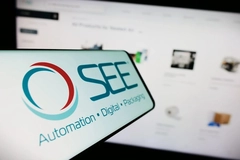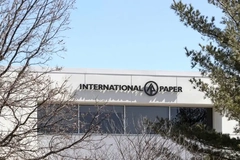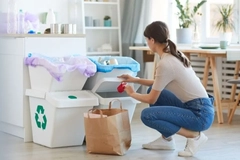Organic foods co. transforms hf/f/s process to debut PLA-based yogurt cups
01 Dec 2010

Organic yogurt company Stonyfield Farm, Londonderry, NH, debuts what the company says is the first yogurt cup to be made from plants. The new packaging is made using Ingeo bioplastic resin from NatureWorks LLC and is being used for the company's multipack yogurts: YoBaby, YoToddler, YoKids, B-Healthy, B-Well, Probiotic and O'Soy.
Organic yogurt company Stonyfield Farm, Londonderry, NH, debuts what the company says is the first yogurt cup to be made from plants. The new packaging is made using Ingeo bioplastic resin from NatureWorks LLC and is being used for the company's multipack yogurts: YoBaby, YoToddler, YoKids, B-Healthy, B-Well, Probiotic and O'Soy.
Bioplastic packaging has been of special interest to Stonyfield for more than a decade. "We initially looked at PLA back in the late 90s," says Nancy Hirshberg, vp of natural resources for Stonyfield. "At that time, the NatureWorks' PLA was only in prototype form and they had not built the Nebraska facility."
So Stonyfield was more than willing to listen to Clear Lam Packaging Inc., when the packaging converter called on them, saying that advances in bioplastics coupled with the converter's own research and development capabilities has made PLA a commercially feasible packaging option for its horizontal form/fill/seal (hf/f/s) dairy packaging operation.
"The process started about two years ago," says Roman Forowycz, group president and CMO of Clear Lam.
"PLA in and of itself has some positive and negative attributes; it is relatively brittle, and it has low temperature resistance. That's why the materials have to be modified with other ingredients that will enhance performance characteristics. NatureWorks makes the base resin for this packaging, and there are three-plus components that we developed internally in our labs that enhance the material for this specific application."
The packaging converter has an in-house laboratory where it can tweak material formulations. To determine the needs for this particular application, Clear Lam worked in concert with both Stonyfield and with its form/fill/seal machinery manufacturer Arcil. These learnings were used to develop PLA-based packaging material and to optimize Stonyfield's hf/f/s machine to work with the bioplastics material web.
"Most of the dairy industry for yogurts uses high-impact polystyrene (HPS) as the base sheet, and [over the years] these lines have been optimized to run HPS," says Forowycz. "The relationship between the materials supplier and the equipment supplier is critical in any of these new applications."
Facilitating outside innovation
This was not a simple machine conversion for Arcil. There were four major optimizations that had to be achieved in this project," Vincent Altazin, U.S. sales manager for Arcil, explains: The parameters were the temperature the heating box; the flatness of the heating box; the type of forming punchers; and the temperature of the molder for good adhesion with every inset label."
He says that the three-party partnership wasn't always easy but very successful. "We had results on time for development, and open new ways of forming, filling and sealing packages."
At the center of the partnership between materials supplier and equipment manufacture is Stonyfield's own packaging team: Rolf Carlson, vp of sourcing and product development; Jack DiMartino, packaging manager in the research and development group; Derwin Flannery, maintenance manager; and Kevin Young, performance manager.
The hf/f/s equipment enables full automation of the package converting, filling and sealing processes.
Carlson has been in the dairy industry 25 years, primarily in the cultured products segment. He served as the executive team sponsor facilitator for the project. "I would say as facilitator, my job was to make sure that the team is able to perform at their optimum level, which means basically to make sure the barriers were removed and resources were provided," he explains.
RIT-trained packaging engineer DiMartino has 15 years of technical experience, including work in the coffee group for Kraft Foods Inc. He coordinated the trials themselves, working very closely with Young and the company's maintenance department to optimize work with the many different vendors on this project.
Young holds a degree in industrial engineering and has 15 years of experience doing lean manufacturing continuous improvement activities. "I basically was the organizer/liaison," he explains. "I worked with Derwin to organize line times for trials and make sure everybody was aware of what was going on."
Flannery is a former nuclear machinist mate for the U.S. Navy and is qualified to work on nuclear reactors and also has a strong background in thermodynamics and metallurgy. As part of his duties as maintenance manager is Stonyfield, Flannery is responsible for maintaining the equipment and the setpoints and therefore controls the modifications and timing for the equipment.
"We had a small team here-a good, cross functional, representative, technically astute team-but at the same time we brought in our equipment supplier, Arcil; we brought in the materials suppliers, Clear Lam, which provides U.S. with the roll stock, Bemis Co., Inc. which provides the labeling, and Winpak Ltd., which supplies the lidding," Carlson explains. "We worked together; we weren't bringing them in one by one; we worked as a team."
Stonyfield also planned for the time and the demands on internal and external resources for this project. "We asked manufacturing to reserve line time for the next trial in so we could make changes or adjustments. We also ask our suppliers and equipment manufacture to reserve time for follow-up. We told our suppliers that we would want them to make necessary adjustments, provide new packaging materials, or print new materials for that next trial. We also knew that if we were testing something that the outcome of the trial might result in some modifications."
Carlson also had to determine the likelihood of the projects success early on. "If the project wasn't going to bear fruit, I want to return resources to their other jobs so that they can work on other projects," he explains. "If something doesn't pan out, well that's fine. That's part of innovation; it's part of trying to come up with new packaging or new products."
This time, the PLA project, started to show promise early.
"We had three trials at the end of last year between September and December," DiMartino explains. "But once we got into our trial at the end of January, I think that was really the first time that people start to believe."
This belief in the project was demonstrated by both internal and external team members. Suppliers began eagerly developing solutions for the projects challenges, and the Stonyfield team members explored all options whether they are new or old.
Web of PLA-based packaging material is fed into the hf/f/s machine
"Our label supplier made all these incredible different types of labels to help the adhesion process," Flannery recalls. "But nothing was working." Instead of being frustrated and giving up, Stonyfield team kept asking for more options. The solution came from a past development not a new one. "Then we said, why don't we try our old labels, and they worked pretty well."
Stonyfield wasn't willing to sacrifice quality for the sake of finishing the project, though. "We were ready to launch this spring without making any investment or machinery but it just wasn't perfect," says Hirshberg. "We decided let's not go and do this and have the packaging looks shabby or be bad. So we made the investments to make sure the packaging was perfect."
New packaging process
The PLA-based packaging material is supplied by Clear Lam as a web. This web is fed into a Arcil A6 hf/f/s machine. To accommodate the hardness of PLA, Stonyfield adjusted the clips that prick the rolls to guide the material into the machine. Stonyfield and Clear Lam also refined the material gauging and the ratio of the layers in the web for optimal performance in the A6.
Source: Stonyfield Farm
All content and features on this website are copyrighted with all rights reserved. The full details can be found in our privacy statement
Subscribe to our newsletters
By continuing to browse our site you agree to our Privacy Statement











